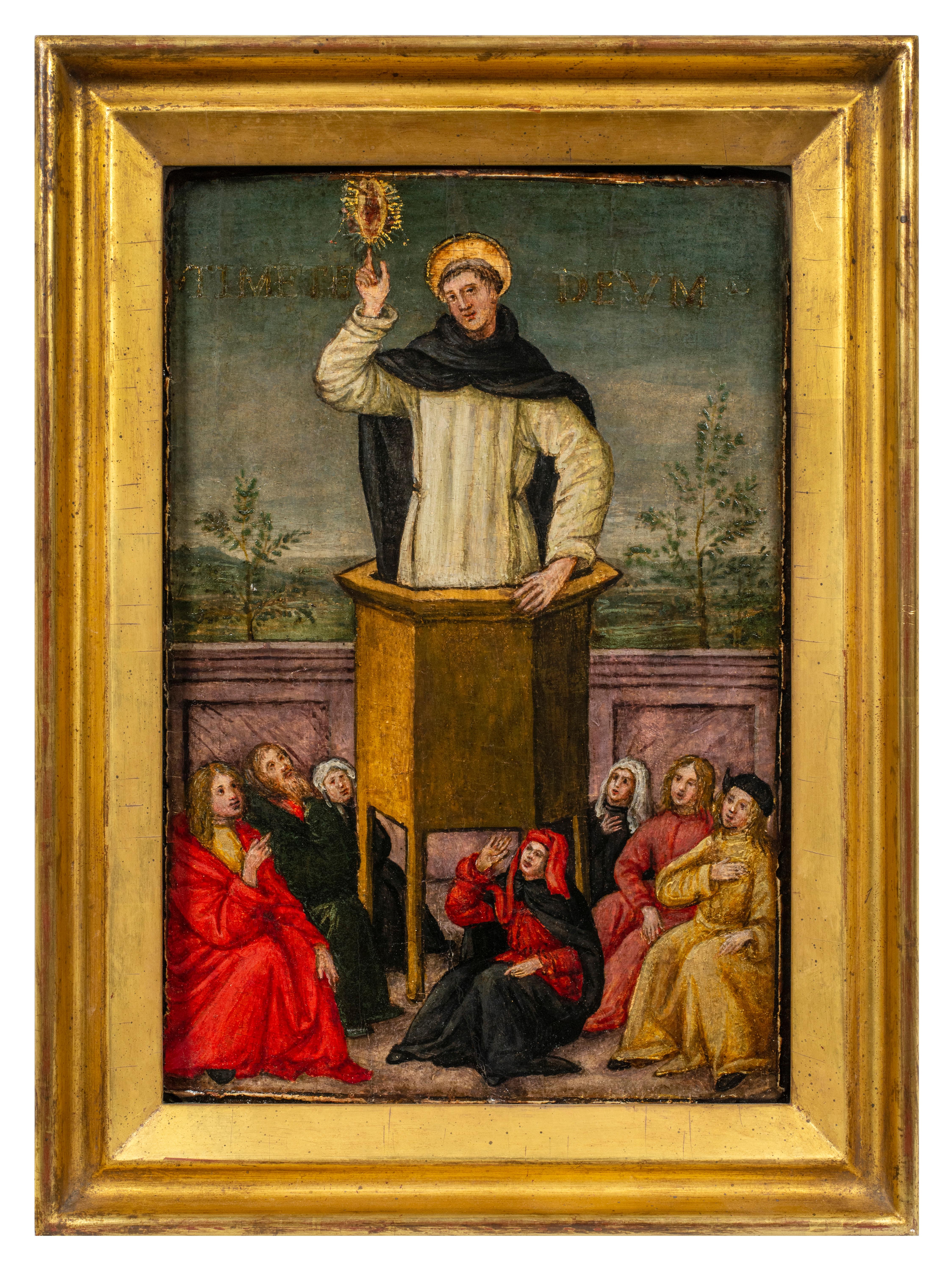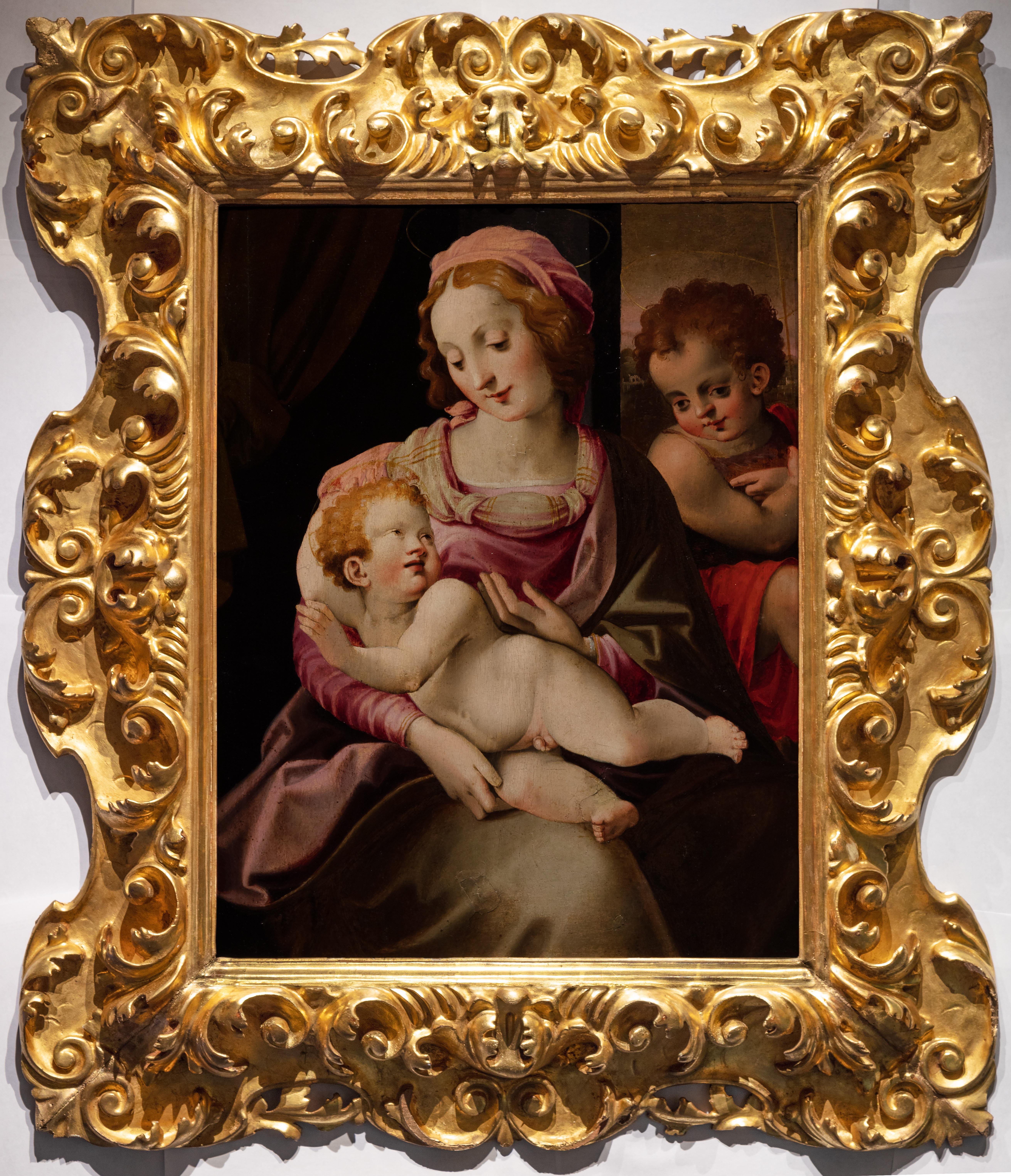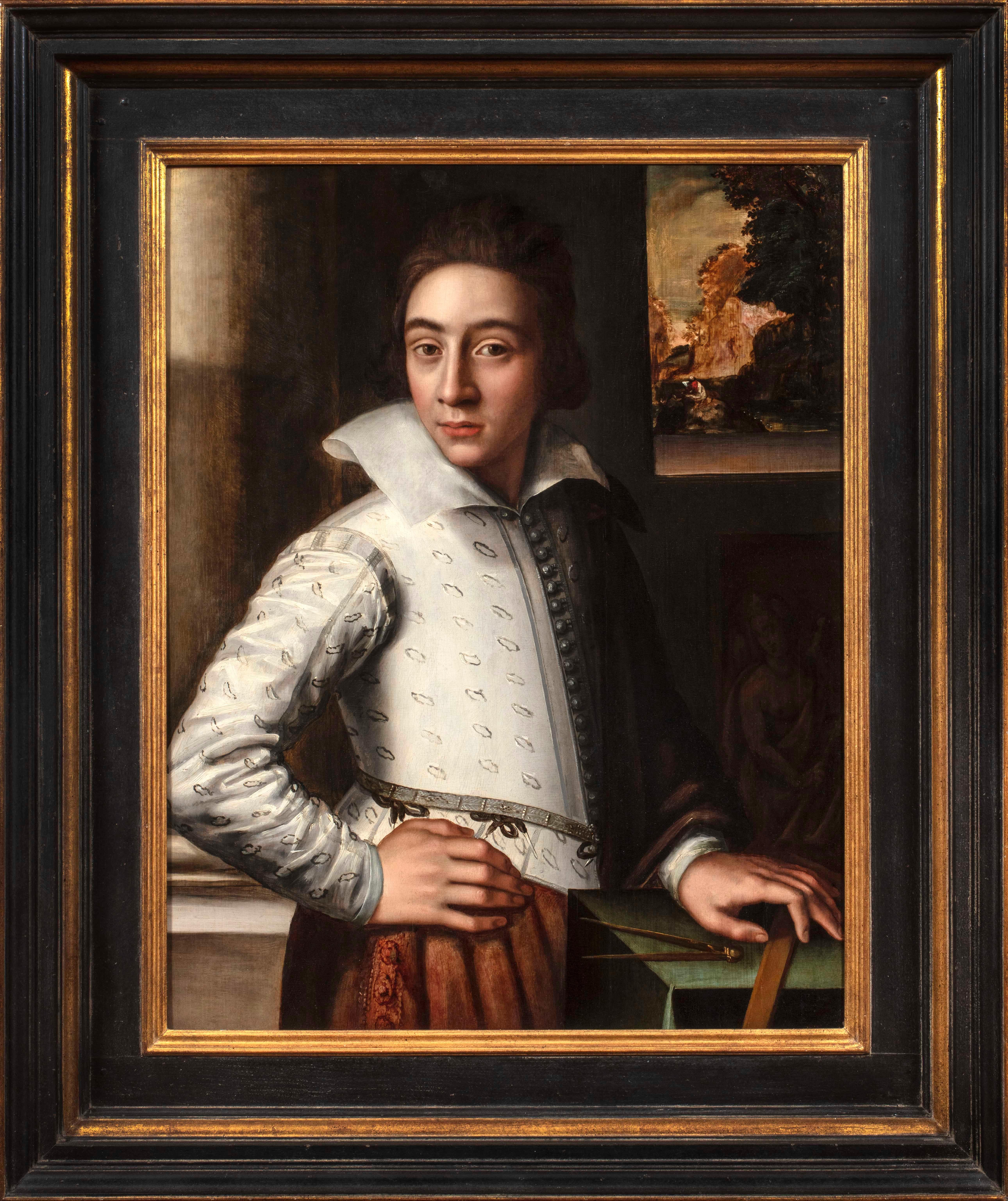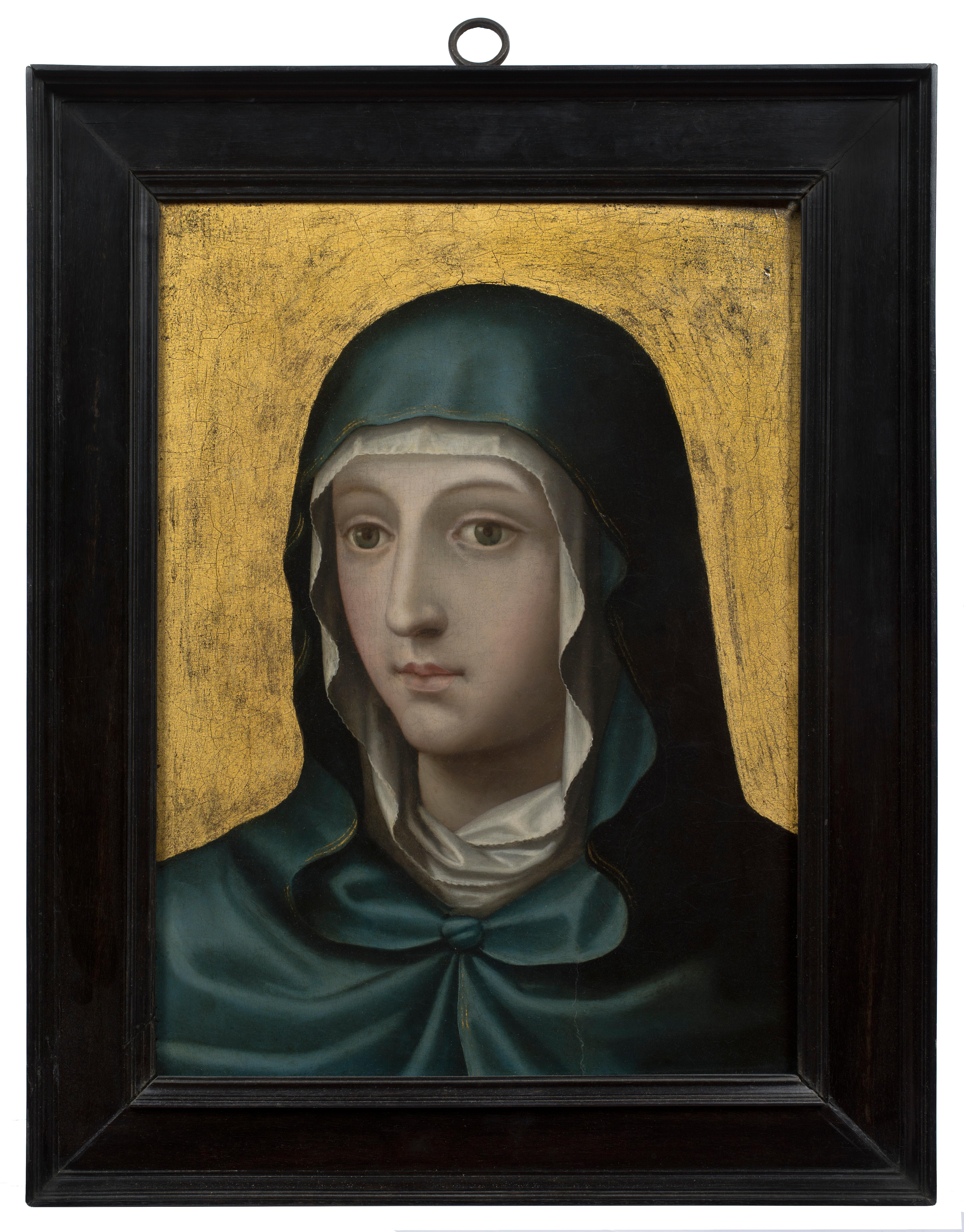Items Similar to Man Examining a Jug
Want more images or videos?
Request additional images or videos from the seller
1 of 6
Walt LouderbackMan Examining a Jug1923
1923
About the Item
Man and woman examining a jug.
Signed lower right
Exhibited:
Masters of the Golden Age: Harvey Dunn and His Students
South Dakota Art Museum, Brookings, South Dakota
May 5, 2015 - September 13, 2015
Norman Rockwell Museum, Stockbridge, Massachusetts
November 7, 2015 - March 13, 2016
JVJ Publishing, Jim Vadeboncoeur; The Vadeboncoeur Collection of Images, Palo Alto, CA. Issue#13, Fall 2014
The brushwork of Walt Louderback was broad and direct, with few subtleties. Yet for all his sledgehammer technique, romanticism permeated his pictures. His characters and their emotions seemed heroic, larger than life. For the reader, the vicarious thrill of participating in the adventure was thereby heightened as well.
Louderback was born in Valparaiso, Indiana, and studied at the Art Institute of Chicago. He lived in Europe for some time in the ‘twenties, delivering his pictures by ship. He was a regular contributor to Hearst’s International, Cosmopolitan, and Good Housekeeping. A painter as well as an illustrator, he experimented with a stylized Cubist-influenced approach. He was awarded the Daughters of Indiana Purchase prize and given a special honorable mention at the Hoosier Salon in 1933.
- Creator:Walt Louderback (1887 - 1941, American)
- Creation Year:1923
- Dimensions:Height: 35.7 in (90.68 cm)Width: 29.5 in (74.93 cm)
- Medium:
- Period:
- Condition:
- Gallery Location:Fort Washington, PA
- Reference Number:1stDibs: LU38431070693
About the Seller
5.0
Recognized Seller
These prestigious sellers are industry leaders and represent the highest echelon for item quality and design.
Established in 1995
1stDibs seller since 2016
107 sales on 1stDibs
Typical response time: 5 hours
- ShippingRetrieving quote...Ships From: Fort Washington, PA
- Return PolicyA return for this item may be initiated within 14 days of delivery.
More From This SellerView All
- Laurel & HardyLocated in Fort Washington, PAMedium: Oil on Wood Panel Signature: Unsigned This Stan Laurel and Oliver Hardy illustration was used as a traveling show sign.Category
1940s Figurative Paintings
MaterialsWood, Oil, Panel, Wood Panel
- Couple in a Horse-Drawn CarriageBy William Henry Dethlef KoernerLocated in Fort Washington, PADate: 1923 Medium: Oil on Panel Dimensions: 24.00" x 36.00"Category
1920s Figurative Paintings
MaterialsOil, Panel
- Portrait of a Cabinet MakerLocated in Fort Washington, PAMedium: Oil on Panel Dimensions: 55.00" x 42.00" Still painting of a joyous cabinet maker. This illustration is very large in size.Category
20th Century Portrait Paintings
MaterialsPanel, Oil
- My Duty Towards my Neighbor, and My Duty Towards God (diptych)By Maxfield ParrishLocated in Fort Washington, PAMedium: Oil on Panel Signature:Signed & Dated Lower Right, ii: Signed & Dated Lower Left Literature: Coy Ludwig, Maxfield Parrish, New York, 1973, p. 153, nos. 194-95, illustrated...Category
1890s Figurative Paintings
MaterialsOil, Panel
- The Scarlet Cockerel interior book illustrationBy Frank SchoonoverLocated in Fort Washington, PAMedium: Oil on Canvas Laid on Panel Sight Size 30.00" x 21.00;" Framed 36.50" x 27.50" Signature: Signed and Dated Lower Right: F. E. Schoonover / 31 "I began to notice the mysterio...Category
1930s Figurative Paintings
MaterialsOil, Panel, Canvas
- Pausing for RefreshmentsBy Charles RelyeaLocated in Fort Washington, PAMedium: Oil on Board Laid on Panel Signature: Signed Lower Right Sight Size 29.00" x 23.00," Framed 33.00" x 37.00"Category
Early 20th Century Figurative Paintings
MaterialsOil, Panel, Board
You May Also Like
- Esther in the Women's House of AhasuerusBy Artus WolfortLocated in New York, NYBorn in Antwerp, Artus Wolffordt received his training in Dordrecht where he became a master in 1603 at the age of twenty-two. He returned to his native city in 1615 and initially worked as an assistant to Otto van Veen...Category
17th Century Old Masters Paintings
MaterialsOil, Panel
- St. Vincent Ferrer Preaching to the People of SalamancaLocated in New York, NYProvenance: Private Collection, New Jersey The present painting depicts Saint Vincent Ferrer preaching from a raised pulpit to a group of seven peopl...Category
15th Century and Earlier Renaissance Figurative Paintings
MaterialsOil, Wood Panel
- Portrait of a ManLocated in New York, NYProvenance: with Leo Blumenreich and Julius Böhler, Munich, 1924 Dr. Frederic Goldstein Oppenheimer (1881-1963), San Antonio, Texas; by whom given to: Abraham M. Adler, New York, un...Category
16th Century Old Masters Portrait Paintings
MaterialsOil, Panel
- Madonna and Child with the Infant Saint John the BaptistLocated in New York, NYInscribed, reverse: Fr Brina Provenance: Private Collection, New Jersey. Francesco Brina was one of the “Studiolo” painters, responsible for the panel of Neptune and Amphitrite in F...Category
16th Century Old Masters Paintings
MaterialsOil, Wood Panel
- Portrait of an Artist (possibly a Self-Portrait)Located in New York, NYProvenance: Bradley Collection. Private Collection, Upperville, Virginia. Literature: Katlijne van der Stighelen and Hans Vlieghe, Rubens: Portraits of Unidentified and Newly Identified Sitters painted in Antwerp, Corpus Rubenianum Ludwig Burchard, vol. 19, pt. 3, London and Turnhout, 2021, under cat. no. 189, p. 161, and fig. 75. This painting had previously been considered to be by an anonymous Tuscan painter of the sixteenth century in the orbit of Agnolo Bronzino. While the painting does in fact demonstrate a striking formal and compositional similarity to Bronzino’s portraits—compare the nearly identical pose of Bronzino’s Portrait of a Young Man in the Metropolitan Museum of Art (Fig. 1)—its style is completely foreign to Italian works of the period. That it is painted on an oak panel is further indication of its non-Italian origin. This portrait can in fact be confidently attributed to the Antwerp artist Huybrecht Beuckelaer. Huybrecht, the brother of Joachim Beuckelaer, has only recently been identified as the author of a distinct body of work formerly grouped under the name of the “Monogrammist HB.” In recent studies by Kreidl, Wolters, and Bruyn his remarkable career has been delineated: from its beginnings with Joachim in the workshop of Pieter Aertsen; to his evident travels to Italy where, it has been suggested, he came into contact with Bronzino’s paintings; to his return to Antwerp, where he seems to have assisted Anthonis Mor in painting costume in portraits; to his independent work in Antwerp (where he entered the Guild of Saint Luke in 1579); and, later to his career in England where, known as “Master Hubberd,” he was patronized by the Earl of Leicester. Our painting was recently published by Dr. Katlijne van der Stighelen and Dr. Hans Vlieghe in a volume of the Corpus Rubenianum, in which they write that the painting “has a very Italian air about it and fits convincingly within [Beuckelaer’s] oeuvre.” Stighelen and Vlieghe compare the painting with Peter Paul Ruben’s early Portrait of a Man, Possibly an Architect or Geographer in the Metropolitan Museum of Art, in which the sitter holds a compass and wears a similarly styled doublet (Fig. 2). Huybrecht both outlived and travelled further afield than his brother Joachim, who made his career primarily in Antwerp. Whereas Joachim was the main artistic inheritor of their uncle and teacher, Pieter Aertson, working in similar style and format as a specialist in large-scale genre and still-life paintings, Huybrecht clearly specialized as a painter of portraits and was greatly influenced by the foreign artists and works he encountered on his travels. His peripatetic life and his distinctly individual hand undoubtedly contributed to the fact his career and artistic output have only recently been rediscovered and reconstructed. His periods abroad seem to have overlapped with the mature phase of his brother Joachim’s career, who enrolled in the Antwerp Guild of Saint Luke much earlier than his brother, establishing himself as an independent painter in 1560. Joachim’s activity was confined to the following decade and half, and his latest work dates from the last year of his life, 1574. Our portrait was likely produced in the late 1560s, a dating supported by the dendrochronological investigation performed by Dr. Peter Klein, which established that it is painted on an oak panel with an earliest felling date of 1558 and with a fabrication date of ca. 1566. This painting presents a portrait of an artist, almost certainly Huybrecht’s self-portrait. The young sitter is confidently posed in a striking patterned white doublet with a wide collar and an abundance of buttons. He stands with his right arm akimbo, his exaggerated hands both a trademark of Huybrecht and his brother Joachim’s art, as well as a possible reference to the “hand of the artist.” The figure peers out of the painting, interacting intimately and directly with the viewer, as we witness him posed in an interior, the tools and results of his craft visible nearby. He holds a square or ruler in his left hand, while a drawing compass...Category
16th Century Old Masters Paintings
MaterialsOil, Panel
- The Veronica of the Virgin (Verónica de la Virgen)Located in New York, NYThe panel has been attributed both to Joan de Joanes and his son Vicente Macip Comes (Valencia, ca. 1555 – 1623). Provenance: Private Collection, England, by 1886 (according to stencils on the reverse) Private Collection, New Jersey, until 2010 The Veil of Veronica, often called the Sudarium, is one of the most important and well-known relics of Christ. According to legend, Veronica offered Christ her veil as he carried the cross to his crucifixion. He wiped his face with the veil, which left the cloth miraculously imprinted with his image. Depictions of Christ’s face on a veil, or simply images that focused in on Christ’s face, were treasured objects of religious devotion. The popularity of this format also inspired similar images of the face of the Virgin. The iconographic type of the present painting is known as the Veronica of the Virgin, which was especially favored in late medieval and early Renaissance Spain. Distinct from the images of the suffering Christ, the Veronica of the Virgin is based on the legend that Saint Luke painted a portrait of Mary from life. Although scholars have sometimes mistaken them for portraits of Queen Isabella I of Castile (known as Isabel la Católica) or as a depiction of Saint Maria Toribia (known as María de la Cabeza, or, Mary of the Head), paintings like this one were clearly intended as images of the Virgin in the style of Saint Luke’s lost portrait. The Veronica of the Virgin was especially popular in Valencia, and depictions of this subject produced there all stem back to one visual prototype: a Byzantine image in the city’s cathedral (Fig. 1). This early treatment of the Veronica was given to the cathedral in 1437 by Martin the Humane, King of Aragon and Valencia, who promoted religious veneration of the Veronica of the Virgin as part of the celebration of the Immaculate Conception of Mary. This devotion spread throughout Martin’s kingdom and particularly took hold in Valencia, where the Byzantine image resided. The image, which is displayed in a gold reliquary...Category
16th Century Old Masters Paintings
MaterialsOil, Wood Panel





